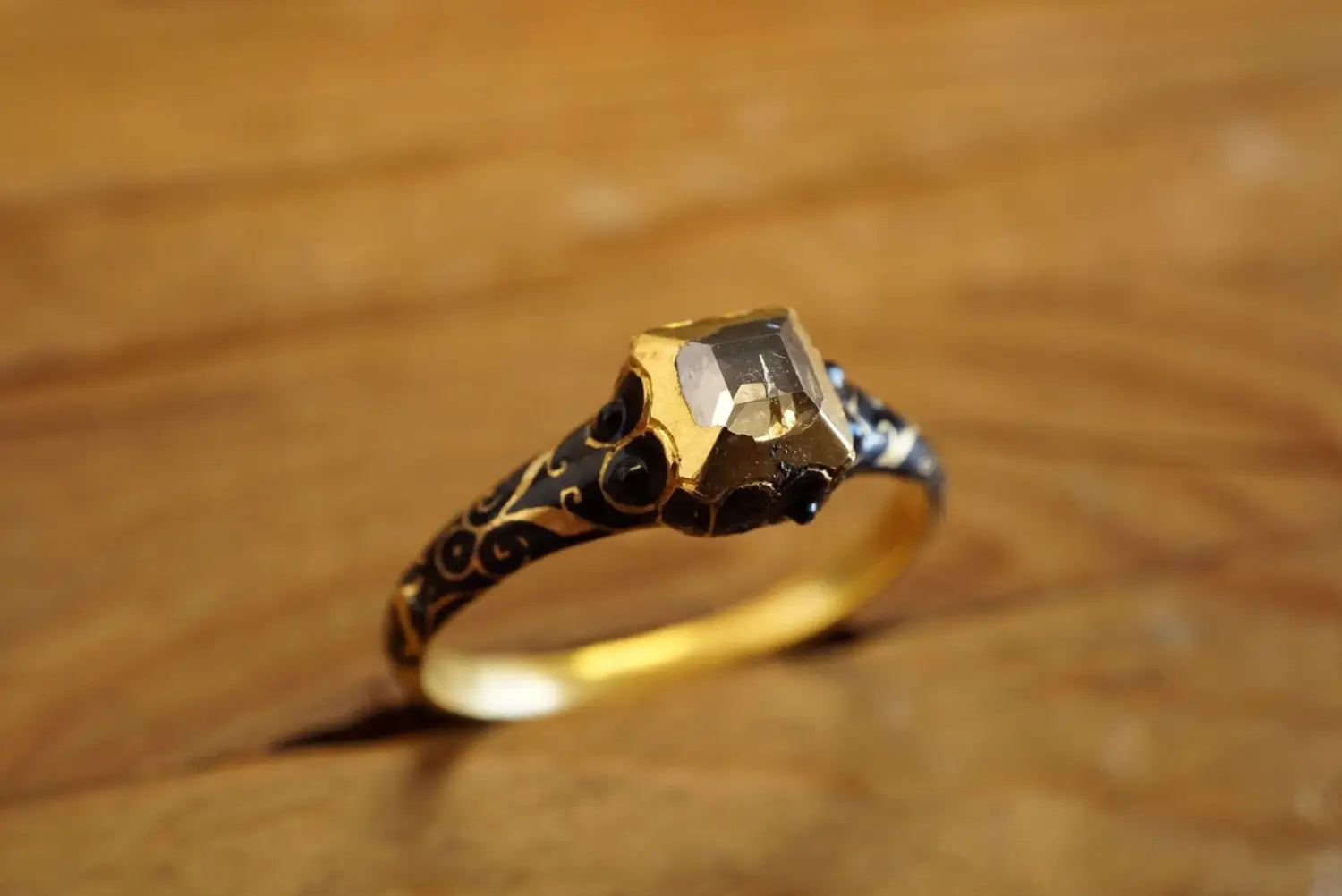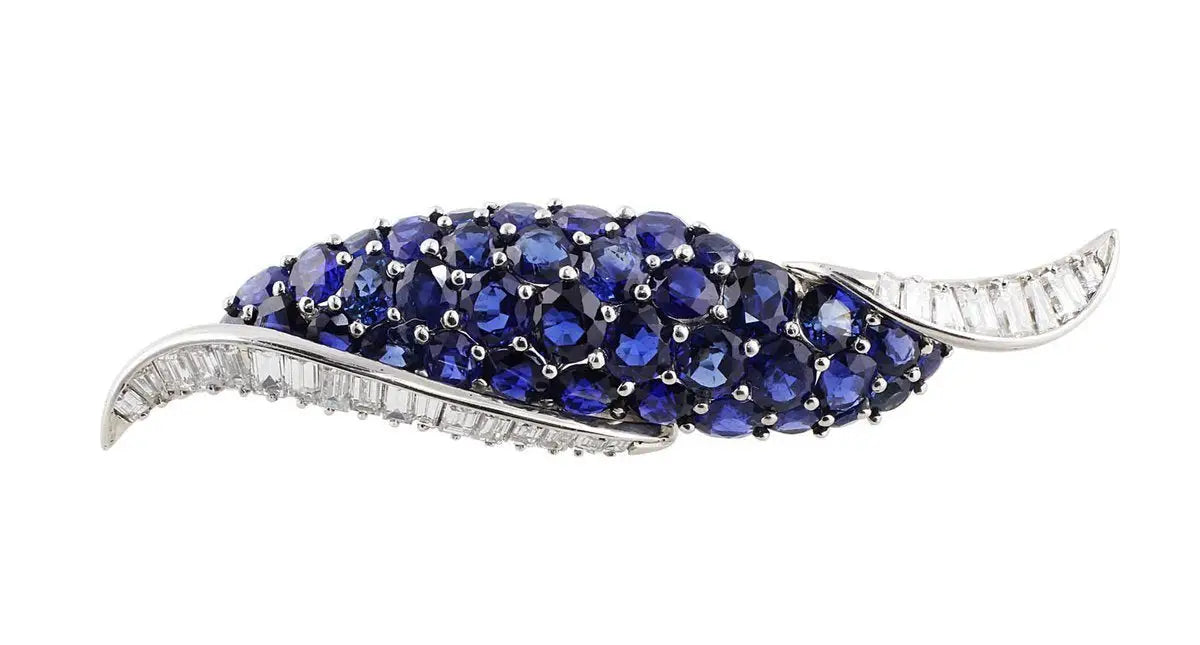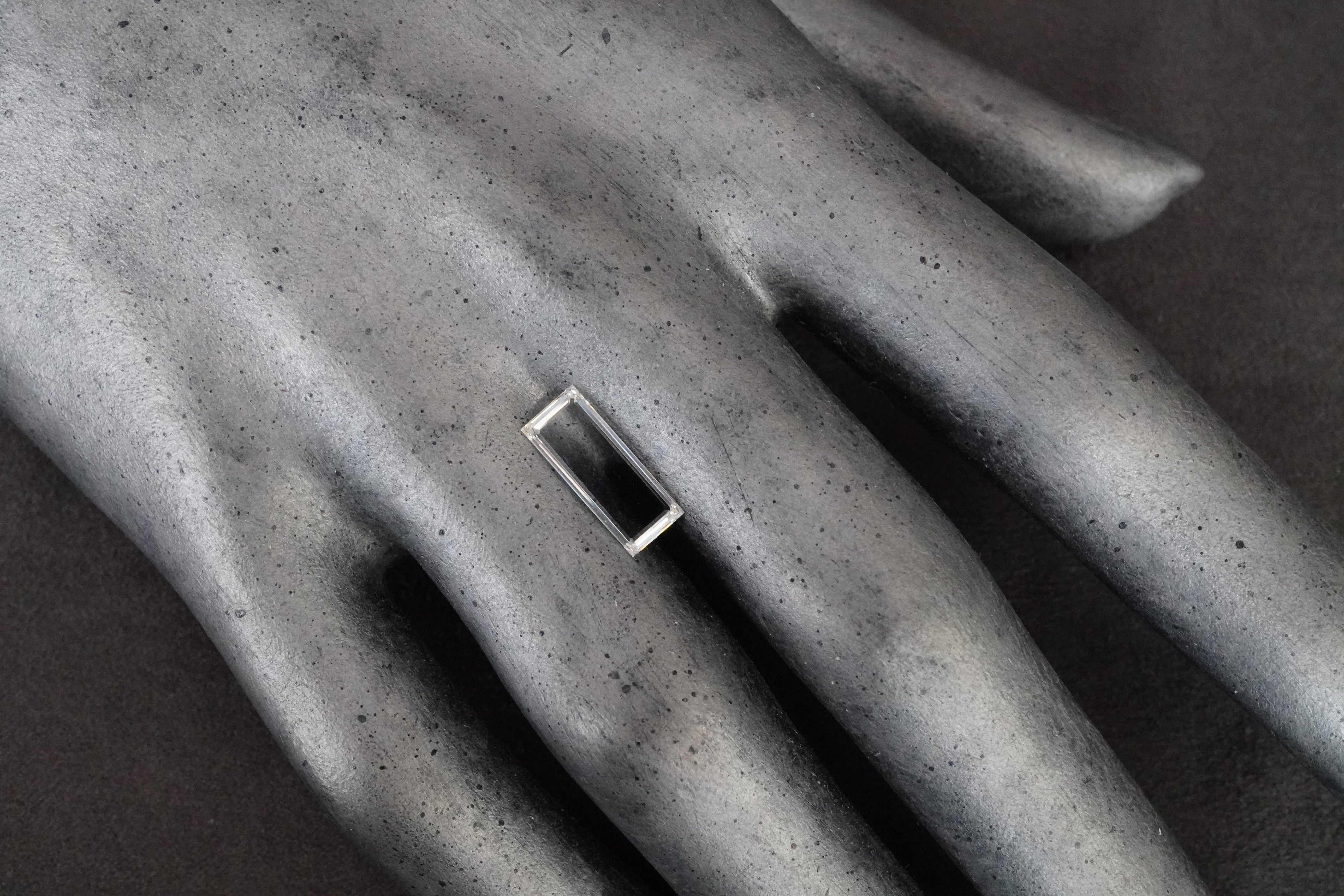
Antique Cut Diamonds: Table Cut
When the early lapidary artists first applied a flat facet to the top of a natural diamond crystal, the table cut was born, representing a significant breakthrough in diamond cutting and the first widely recognized diamond cut.
For centuries before this development, natural diamond crystals, also known as rough, were highly valued in ancient India, where diamonds were first discovered around the 4th century B.C. This was partly due to diamonds being the hardest natural material on Earth, combined with a lack of the necessary knowledge and skill to cut them. Additionally, the inherent shapes of natural diamond crystals contributed to their allure.
Natural diamond crystals commonly occur as eight-sided octahedrons, resembling two pyramids joined at their bases, or as 12-sided dodecahedrons, shapes that were believed to hold symbolic power. These well-formed crystals were thought to possess great mystical powers, making them highly sought after in ancient India.
As diamonds began to travel to other parts of the world, including Europe, many of these coveted, well-formed octahedral and dodecahedral shapes likely remained in India. Early lapidary artists, aware that diamonds could alter other diamonds to intensify their beauty, became inventive with the more misshapen rough.
The first table cut, believed to have emerged in the 15th century, involved removing one point of a natural diamond crystal in an octahedral shape (less than half of the diamond) and flattening the opposite point. This produced a diamond with a flat, square-like facet on top and a flat culet, with the remaining eight crystal faces forming four simple facets at a bevel angle on the crown and four on the pavilion.
Lapidary artists soon discovered that the table facet greatly enhanced a diamond’s appearance, seemingly unlocking its hidden brilliance, sparkle, fire, and beauty. In response, jewelry designers began creating designs that showcased this new diamond cut to its fullest, resulting in pieces with intricate design details and fine enameling.
As technology advanced, lapidary artists were able to add more facets to diamonds more easily, leading to a wider variety of diamond cuts. Several modern cuts evolved from the antique table cut, including the step cut, which is the predecessor to the emerald cut and the closely related Asscher cut.
Emerald-cut and Asscher-cut diamonds are essentially the same cut, with the emerald cut being rectangular and the Asscher cut square. Both feature flat tables and step cuts, which are facets that run along the lengths of their undersides. Unlike brilliant-cut diamonds, which have facets extending to the girdle and converging at the culet, emerald and Asscher cuts have fewer facets, giving them a glassier appearance. This elegant, refined look pays homage to the original table cut.
Photo: Antique ring featuring a table-cut diamond from the Jogani collection.


